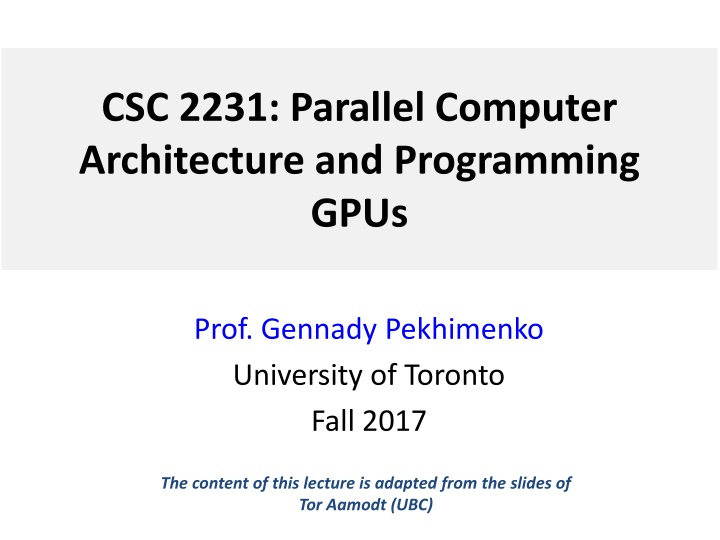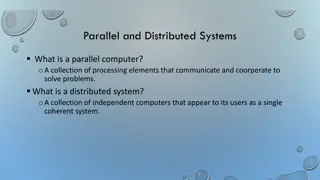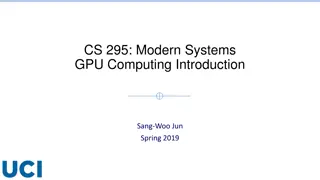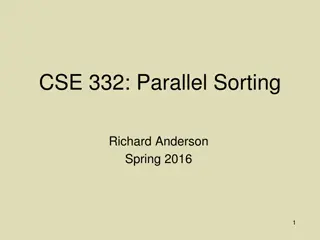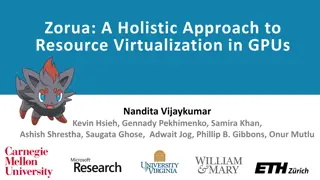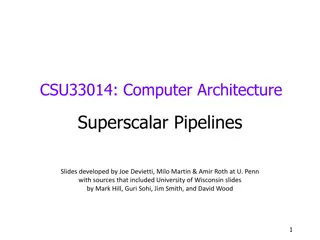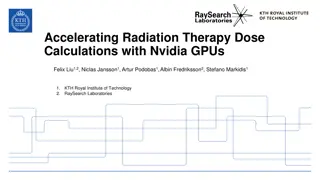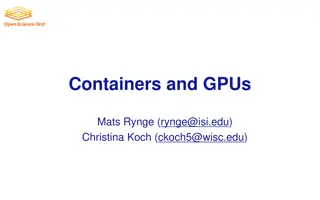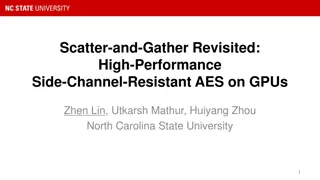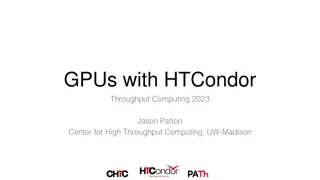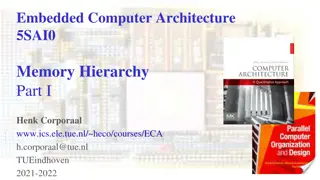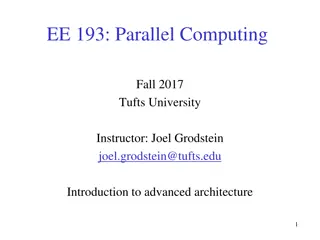Introduction to GPUs in Parallel Computer Architecture
This lecture discusses Parallel Computer Architecture and Programming GPUs, covering topics like the history of GPUs, the role of GPUs in parallel computing, and the evolution of GPU technology. It also highlights the use of GPUs for raster-based graphics, their programmability, and their significant computational capabilities. The presentation emphasizes the importance of GPUs in modern computing and their applications in various domains.
Uploaded on Sep 15, 2024 | 1 Views
Download Presentation

Please find below an Image/Link to download the presentation.
The content on the website is provided AS IS for your information and personal use only. It may not be sold, licensed, or shared on other websites without obtaining consent from the author.If you encounter any issues during the download, it is possible that the publisher has removed the file from their server.
You are allowed to download the files provided on this website for personal or commercial use, subject to the condition that they are used lawfully. All files are the property of their respective owners.
The content on the website is provided AS IS for your information and personal use only. It may not be sold, licensed, or shared on other websites without obtaining consent from the author.
E N D
Presentation Transcript
CSC 2231: Parallel Computer Architecture and Programming GPUs Prof. Gennady Pekhimenko University of Toronto Fall 2017 The content of this lecture is adapted from the slides of Tor Aamodt (UBC)
Project Progress Report Due next week Friday (Nov. 3rd) Ask questions after the class 2
Review #7 GPUs and the Future of Parallel Computing Steve Keckler et al., IEEE Micro 2011 Due Nov. 10 3
Review #5 Results Grades (out of 10) Mean: 9.05 10 9 8 7 6 5 4 3 2 1 0 6s 7s 8s 9s 10s 4
What is a GPU? GPU = Graphics Processing Unit Accelerator for raster based graphics (OpenGL, DirectX) Highly programmable (Turing complete) Commodity hardware 100 s of ALUs; 10 s of 1000s of concurrent threads NVIDIA Volta: V100 5
+ The GPU is Ubiquitous 6 [APU13 keynote]
Early GPU History 1981: IBM PC Monochrome Display Adapter (2D) 1996: 3D graphics (e.g., 3dfx Voodoo) 1999: register combiner (NVIDIA GeForce 256) 2001: programmable shaders (NVIDIA GeForce 3) 2002: floating-point (ATI Radeon 9700) 2005: unified shaders (ATI R520 in Xbox 360) 2006: compute (NVIDIA GeForce 8800) 7
+ GPU: The Life of a Triangle process commands Host / Front End / Vertex Fetch transform vertices to screen -space Vertex Processing generate per- triangle equations Primitive Assembly, Setup Frame Buffer Controller generate pixels , delete pixels that cannot be seen Rasterize & Zcull Pixel Shader determine the colors , transparencies and depth of the pixel Texture do final hidden surface test,blend and write out color and new depth Pixel Engines (ROP) 8 [David Kirk / Wen-mei Hwu]
+ pixel color result of running shader program 9
Why use a GPU for computing? GPU uses larger fraction of silicon for computation than CPU. At peak performance GPU uses order of magnitude less energy per operation than CPU. Rewrite Application CPU 2nJ/op GPU 200pJ/op Order of Magnitude More Energy Efficient However . Application must perform well 10
+ GPU uses larger fraction of silicon for computation than CPU? ALU ALU Control ALU ALU Cache DRAM DRAM CPU GPU 11 [NVIDIA]
CSC 2231: Parallel Computer Architecture and Programming GPUs Prof. Gennady Pekhimenko University of Toronto Fall 2017 The content of this lecture is adapted from the slides of Tor Aamodt (UBC)
